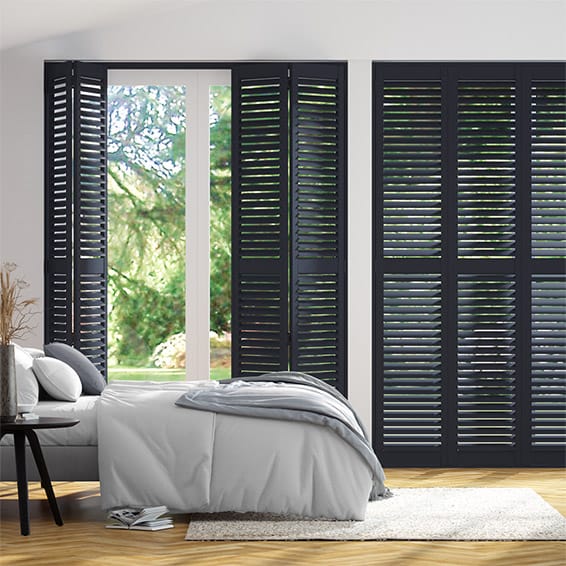Shutters over the course of history were not only aesthetically pleasing but provided a necessary function with their many uses. They were used for security, provided privacy from outsiders passing by, added an extra layer of insulation during winter weather (with wood having a high R value) and blocked out the sun preventing damage to furniture. Movable louvers allowed a breeze to enter a home, keeping the room cool on a hot summer day.
Earlier shutters were either single board, or board-and-batten (vertical wood slats) which were very basic. Raised solid paneled shutters then appeared and provided a lighter, more elegant look. Fixed louvered shutters then came into use during the late 1700’s.
Historically, those with raised solid panels were referred to as “shutters” while those with louvers were called “blinds”. Most homes would have solid panel shutters on the first floor for privacy and security and louvered shutters gateshead on the second floor to allow the breeze to enter during the warm months. Some shutters combined both features – a raised solid panel on the lower portion and louvers on top. “Operable Louvered Shutters” began to be manufactured around 1830-1840.
With the advent of the Storm Window, shutters began to be removed and stored away before the cold months and storm windows would be installed. Removal was easy – all you needed to do was lift the shutter off the pin on the hinge. Shutters could also remain on the building, left in an open position. During the warm months, the storm windows would be removed and shutters would be closed to protect furniture from the sun and allow outside air to cool the house.
Toward the later part of the 19th century, awnings became popular and screen windows began to come into use. In some styles of architecture, shutters also began to fall out of fashion. By the 1920’s, although some shutters were still used for practical reasons, most shutters were strictly decorative. Those that were purely decorative however, were still functional or had the appearance of being functional. Homeowners could still operate the shutter to cool or insulate the home if they wished. There was no difference to the appearance of the house. Unfortunately, this changed during the 1950’s with the advent of Aluminum Siding and Aluminum Shutters. This is when the dreadful problem we have today began.
Where Shutters Went Wrong
The public has always been in love with a traditional look, and shutters provide that look. Aluminum siding and aluminum shutters started to be heavily marketed. To simplify installation of aluminum shutters on aluminum siding, shutters began to be installed by mounting the shutter on the siding NEXT TO, instead of ON the window casing, without the use of hinges. Eventually, people became more inclined to laziness, less knowledgeable, and more insensitive to the appearance of their windows and began using the wrong size shutters. Before you knew it, they were putting rectangular shutters on arched windows and whatever else you could imagine!
This is where we are today. As you see, shutters have evolved in a grossly unfortunate way. Sadly, we too have evolved in accepting this new bland look. It is now normal and what we expect to see when we look at a house with shutters.
For the complete article and more detailed information with photographs, visit my website to learn all you will ever need to know about shutters. You are accustomed to seeing and liking shutters that are wrong for your house and will actually make it look bad.
Some topics include:
Hardware for Shutters – Types of Shutter Hinges
Some Examples of Good and Bad Shutters
What Style Shutter is Right for My House?
Wood Shutters Maintenance
Paint Colors for Shutters
